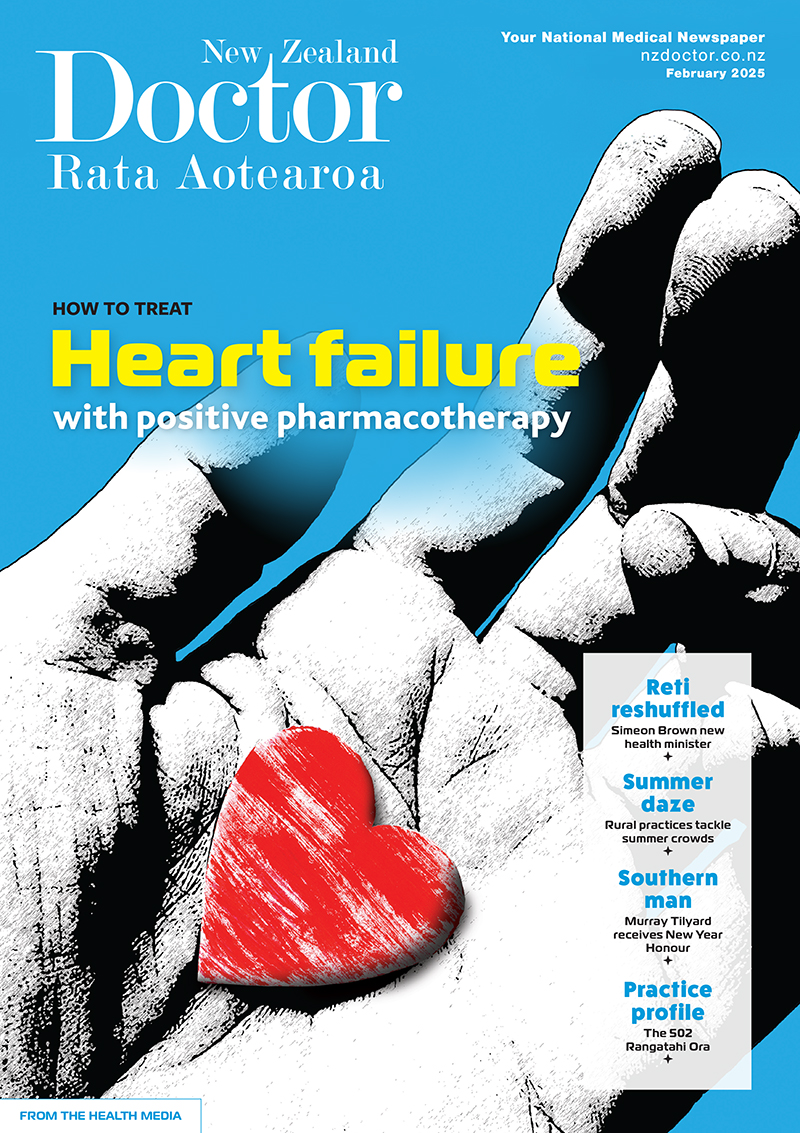Pharmacist prescribers Linda Bryant and Leanne Te Karu discuss positive polypharmacy for heart failure. Current evidence shows the intensive implementation of four medications offers the greatest benefit to most patients with heart failure, with significant reductions in cardiovascular mortality, heart failure hospitalisations and all-cause mortality
Water health warnings lifted, COVID-19 restrictions still apply
Water health warnings lifted, COVID-19 restrictions still apply

Canterbury District Health Board’s Community and Public Health unit has lifted its algal bloom health warnings for the Rakahuri/Ashley River, Temuka River at Manse Bridge, Te Ana a Wai/Te Nga Wai at Te Nga Wai Road and the Opihi River at Waipopo Huts.
Recent cyanobacteria surveys of the above mentioned rivers have shown the cover of potentially toxic algae (benthic cyanobacteria) in the river have decreased and are now below a threshold that is of concern to public health.
Cantabrians are reminded that restrictions still apply to the use of recreational water sites dependent on the COVID-19 Alert Level.
Health warnings remain in place for cyanobacteria at the following sites:
• Te Waihora/Lake Ellesmere (planktonic)
• Wairewa/Lake Forsyth (planktonic)
• Pegasus Lake (planktonic)
• Temuka River at SH1 (benthic)
Canterbury Medical Officer of Health Dr Ramon Pink says Environment Canterbury’s Contact Recreation water quality monitoring has ceased until the 2020/2021 summer, however sites which remain in a health warning will continue to be monitored regularly.
“The public should keep a look out for cyanobacteria in rivers/river banks during any recreational activities they undertake,” says Dr Pink.
Facts about benthic cyanobacteria in rivers:
• Appears as dark brown/black mats attached to rocks along the riverbed.
• A low cover of the algae can occur naturally but can increase rapidly during warmer months. Algal blooms are influenced by a combination of available nutrients in the water and sediments (such as nitrogen and phosphorus), a sustained period of low and stable flows, and favourable weather conditions (e.g. increased temperature, calm days).
• It often has a strong musty smell and algal toxin concentrations can vary over short periods.
• Although high river levels will remove the algal bloom, detached mats can accumulate along the shore and increase the risk of exposure to toxins.
• If a health warning is in place avoid contact with the water.
• Although district or city councils may place warning signs, these may not be seen at the numerous river access points, hence the need for people/ dog-walkers to treat every low-flowing river cautiously.
Facts about planktonic cyanobacteria in lakes:
• If the water is cloudy, discoloured, or has small globules suspended in it, avoid all contact.
• Not all cyanobacterial blooms are visible to the naked eye and toxins can persist after the blooms disappear.
• Cyanobacterial concentrations can change quickly with changing environmental conditions (e.g. wind). If a health warning is in place avoid contact with the water.
For further information visit:
https://www.lawa.org.nz/explore-data/canterbury-region/
Or contact Community and Public Health on (03) 364 1777:
https://www.cph.co.nz/your-health/recreational-water/
For more information about Mahinga Kai:
https://www.cph.co.nz/wp-content/uploads/saf0112.pdf



